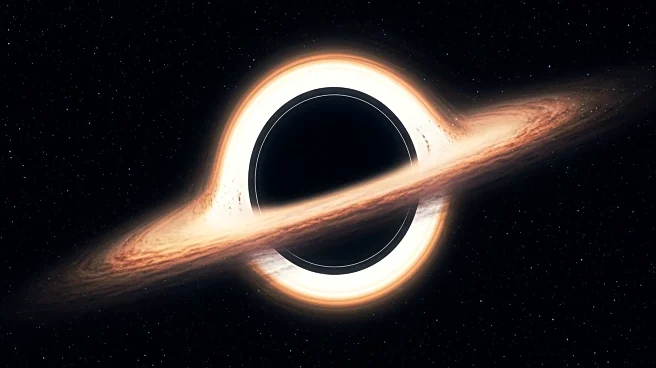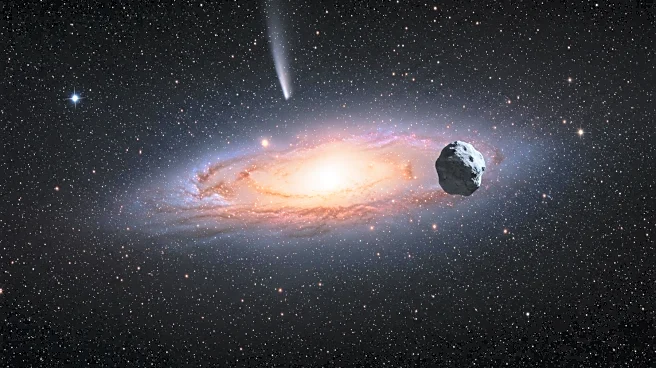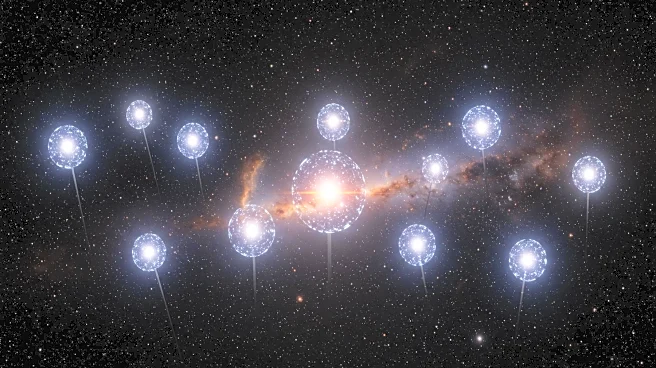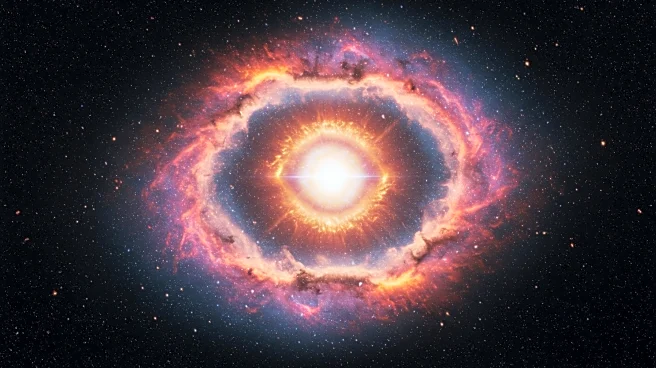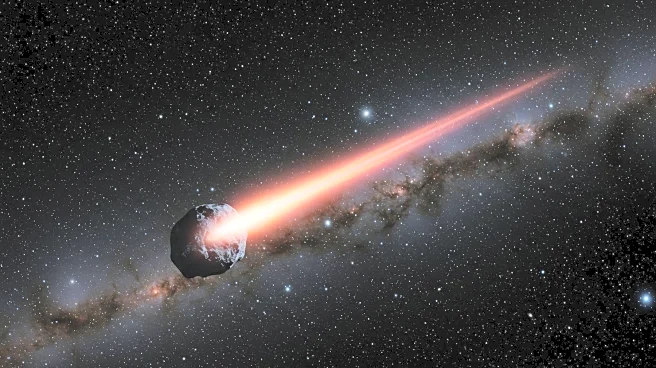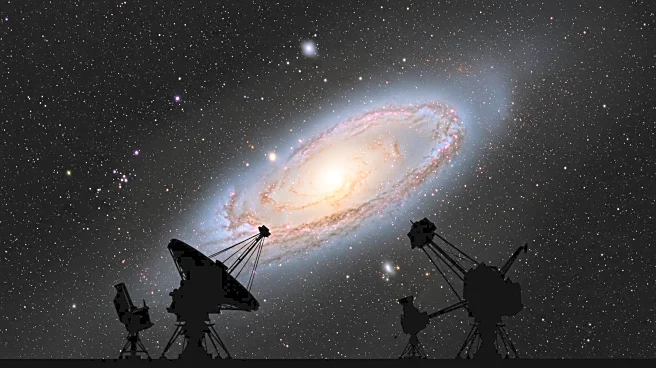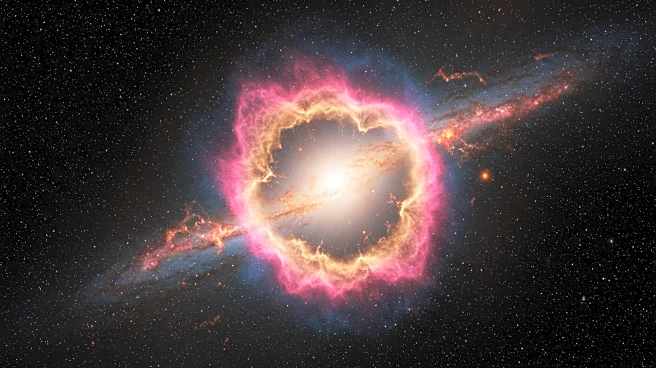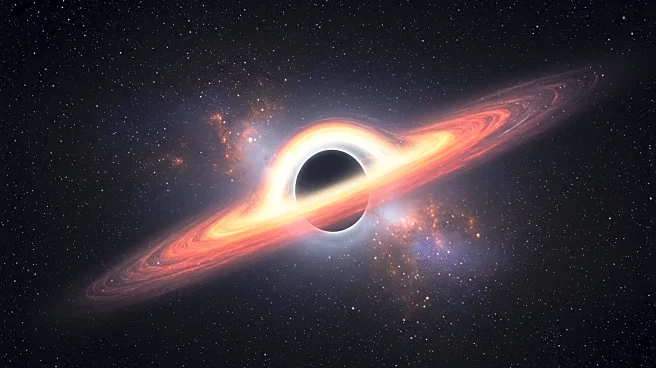Rapid Read • 6 min read
Astronomers have identified a distant galaxy, CAPERS-LRD-z9, hosting a rapidly growing supermassive black hole. This galaxy, from when the universe was about half a billion years old, shows broad emission lines indicative of gas spiraling around a black hole. The study suggests the black hole could have started as a large seed or grown at an exceptionally high rate, challenging existing models of black hole formation and growth in the early universe.
This discovery provides new insights into the formation and evolution of supermassive black holes in the early universe. Understanding how these black holes grow rapidly can inform models of galaxy evolution and the role of black holes in shaping cosmic structures. The findings also contribute to the broader field of astrophysics by offering a glimpse into the conditions of the early universe and the processes driving black hole growth.
AD
Future research may focus on identifying more distant galaxies with similar characteristics to refine models of black hole growth. Observations using advanced telescopes like the James Webb Space Telescope could provide further data on the environments and conditions that facilitate rapid black hole growth. These studies could lead to a deeper understanding of the cosmic timeline and the evolution of galaxies.
AD
More Stories You Might Enjoy
